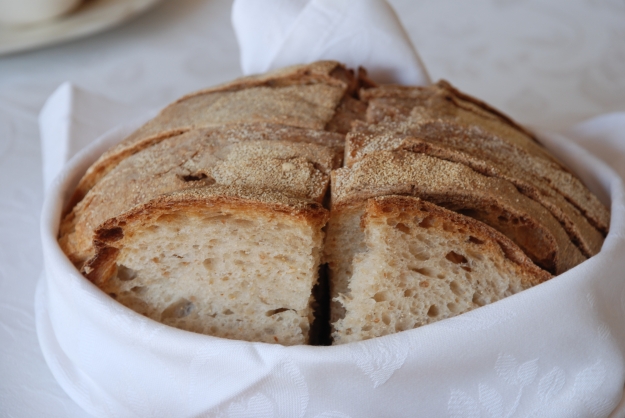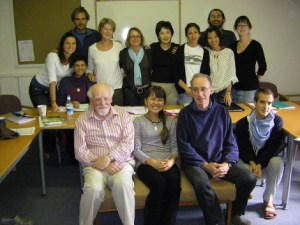
Photo credit: globaldashboard.org
What the Frack?!? How can we evolve humanity beyond our culture of violence, self-centeredness and domination into one of peace, partnership and creativity?
“The Sky is Pink!” by Josh Fox and the Gasland team
Fracking has been on the periphery of my awareness for a while now, but it wasn’t until I met with friends at the weekend, and had the process, and the dangers explained to me that my outrage began. I have since done some of my own research and came across the video that I have posted above. I found it gave me a more in depth yet concise account of what fracking is, how it is obviously very harmful to people and the environment – including infiltrating our drinking water through the invading the earths’ water tables with potentially carcinogenic chemicals, and not to mention destroying acres of natural habitats and farmland.
The video also reveals that the same PR company who were hired for a dis-information campaign by tobacco companies in the 1950’s to dispel the rumour that smoking causes cancer, and to promote cigarettes as ‘good for you’ , have been hired by the American Natural Gas Association to promote fracking, like smoking tobacco in the 1950’s, as perfectly harmless. Watch the video, do some research and you make up your own mind.
My question is how can any individual in a position of great collective responsibility advocate for a process that is so incredibly destructive, both for human and non-human life? Especially in the face of so much scientific, geological and medical evidence, not to mention pleas from everyday people not to deface their nation’s land, or to compromise their drinking water? What could be the possible dynamics of their being and experience that motivate their actions?
Well, to me the possibility for that kind of denial suggests a closed mind, most certainly a closed heart, a strong self-interest above and beyond everything and everyone else, and probably deep down, fear. Their minds are closed to scientific evidence, their hearts are closed to emotional pleas from citizens, they are interested only in maintaining the source of their personal wealth, and they are probably living in fear of losing their wealth, power and control. In terms of how they are experiencing and reacting to the world, they have closed themselves to life, shutdown, restricting themselves to a mere fraction of their possibility ‘to be’ human.
When I understand that those few, so far removed from my everyday experience of life, who make decisions for the many, that affect my possibilities in everyday life to experience clean drinking water or enjoy my country’s natural habitat, are functioning in this way, as a mere shadow of humanity, I end up feeling rather dis-empowered. So how can I practically effect lasting change within my personal remit, other than spreading information to raise awareness of the issues?
Well, I can challenge myself to change, and to live a life that is a polar opposite to the greed, and narrow minded self-interest of a closed, fearful person. I challenge myself to live life fully awake and alive, to practice being and becoming the fullest, liveliest possibility of what it means to me, to be human. To have courage to come alive and to appear in my fullness, to lead the way, by example, in being human – to be open; receptive; welcoming; participatory; sensitive to the dynamics and context of all facets of life; and mindful that each and every move I make is from love and gratitude, not from fear and control.
I can choose to be aware, moment by moment, of my living context and the context of all my actions and decisions. I can choose not to be deceived by appearances, the ‘thing’ before me, but to go further and to participate in exploring its process, its life. I can begin to understand that there is a ripple of consequences that follow all of my actions.
I can wake up to the fact that I have a cognitive capacity to ‘see’ the world in different ways, re-presenting through my left hemisphere, or presencing through my right hemisphere (see my article ‘The Art of Seeing’ referencing the work of Iain McGilchrist), and that making a conscious choice in how I see the world affects what I see. I must understand, when exploring the dynamics of life, that diversity is an expression of unity, not of separation. It is only the cognitive process of the left hemisphere that separates. I must remind myself that the dynamics ARE the life of a ‘thing’, not the ‘thing’ itself. The product of thought, word, or creation, is just a snapshot of its history of being, just an illusion of solidity fixed in space and time. I need to employ my imagination and intuition to see and to understand the process beyond that ‘snapshot’ which presents itself to our immediate senses.
I need to understand that absolute separation is only an illusion, stemming from our way of attending to the world. I need to understand that the life, the living essence, and intrinsic value of anything will never be fully present before me in a fixed, object form, and that only through understanding its dynamics will the life of that thing be able to appear before me, and to live within me.
I must take care to attend to the world with care and with focus to what is directly available to me in my living experience through engaging and participating in a relationship with it, so that I am not just attending to the thing through my judgements, preconceptions, assumptions, fixed ideas and concepts. I have to learn to let go, to be vulnerable and to accept the unknown, if I am ever to stand a chance of truly and deeply getting to know anything, or to fully and confidently stand in my own knowing, rather than always deferring to the thoughts or words of another.
I have to meet the world in my nakedness, and to see the world with naked eyes, removing the filters and veils that we layer ourselves up with to maintain control and to keep fear at bay. Only then am I in a position to get to know anything in life in terms of itself, and to participate in a healthy, living relationship that in turn may allow life to live and thrive, within and between us.
I cannot personally change the closed minded, closed hearted people in responsibility at the top of our collective systems who are protecting their self-interest, motivated by fear and control, limiting themselves to being only a shadow of a human – but I can open myself and relate to them, if I ever get to meet them, and to those who are around me in an open and receptive way. I can attend to context and process, participating with and accepting all I meet with an unconditional positive regard, or, you could call it, love.
I can use my imagination and intuition to work out how I can affect positive change in the systems and actions of which I am immediately and experientially a part of, such as, where I buy my food from; how I use the energy that the fracking is destined by some to produce; and what and how much I buy from the dazzling, ubiquitous array of energy intensive, mass-produced consumer goods that are on offer to us in the western world.
I can become adept at exploring the living context and dynamic processes of all my actions, seeing how and what they are in relationship with the rest of the world and its systems, and thus act accordingly. I can continue to become more curious, getting to know the world in terms of itself, and acting from a deeper, more awake and aware, receptive space – that is a response to life as it is, rather than reacting to the static abstraction of what I, or others, think or tell me it is.
I can also direct this inquiry inwards, which is of equal importance. I can curiously explore with wonder my own being, and what my personal needs are that need meeting for me to thrive, beyond those that society, the government and international bodies tell me they are, and that usually amount to no more than survival and subsistence. I can learn to explore, to experience and to identify what my physical needs are, such as food, shelter, warmth, and also what my non-physical needs are, such as love, affection, sense of belonging. (See the work of the Chilean economist Max Manfred-Neef for the most comprehensive, contemporary view on this).
Once I have identified my own, authentic needs as I experience them in my everyday life, I can then mindfully work to meet them, with regard to the process and context of how I do so, so that I can thrive and, in combination with all that I have suggested above, be a living example of what is possible in the quest to becoming fully human. I can live by example so that others can witness and experience the benefits that it could bring them, so that they may understand that they can also become more of who they are by becoming something other than they already are.
And so, my hope is that the seeds of life may germinate, one by one, until eventually the ripple of open-minded, receptive, welcoming, unconditional positive regard may eventually reach across the counties and the oceans, to the shores of those pinnacles of self-interest – and that on meeting this way of being human, it may strike a chord somewhere deep within them, or spark a deep recognition of intuitive understanding that I believe they too hold somewhere inside of them, and that one day, that seed may start to germinate and come into being within them also.
This is not a prescription or a doctrine for how to be human. It is just a personal exploration of the capacities that human beings hold, that enable them, that enable me, to be human. So from my own lived experience, and from observing human and non-human life, I do believe that by developing a more dynamic way of seeing, being, and living, personally – and professionally through creating new living systems based on context, process and relationship – we will spread the potential of becoming more fully human through cultural transmission, by seeing and living more dynamically.
Just as the overly analytical, static, closed way of seeing of the Western world, with its over emphasis on quantification, mechanisation, reductionism and control, has been culturally transmitted to nearly the rest of the entire world ; so, in turn, can we spread the love, the dynamics of life, that are openness and receptivity, with an unconditional positive regard for all, an evolution in being, that sees beyond just the ‘things themselves’, to understand their life processes, and the interconnected web of relationships that is their living context – and so spread the potential for each and every human to feel and to be, to become more fully alive by doing so. Evolving humanity beyond our culture of violence, self-centeredness and domination into one of peace, partnership and creativity.





